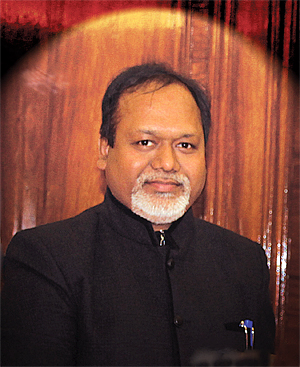INDIAN ARMED FORCES CHIEFS ON
OUR RELENTLESS AND FOCUSED PUBLISHING EFFORTS

SP Guide Publications puts forth a well compiled articulation of issues, pursuits and accomplishments of the Indian Army, over the years

I am confident that SP Guide Publications would continue to inform, inspire and influence.

My compliments to SP Guide Publications for informative and credible reportage on contemporary aerospace issues over the past six decades.
A Word from Editor-in-Chief
F-16 Block 70 production line is on offer and is conditional to orders from the Indian Air Force. SP’s believes it is sensible to seek an assured order following which Lockheed Martin will move the entire production line of its largest selling fighter (currently in use in 27 nations) to India.

The aerospace and defence sector landscape in India is going through a metamorphosis, thanks to the many initiatives of the Central Government. Testimony to this development is the interest shown by the US defence giant Lockheed Martin which is exploring the possibilities of setting up production facilities in India for the F-16 aircraft, provided there are enough numbers. If this materialises then it would be in sync with the Prime Minister Narendra Modi’s mantra of ‘Make in India’ and export to the world. Importantly, it will be one major push for defence aerospace in India. It will also quickly make up for the alarming deficiencies in the combat fleet of the Indian Air Force (IAF).
Meanwhile, there have been two significant developments related to military aviation in the Asian region. The Mitsubishi Heavy Industries of Japan has successfully test-flown the ATD X-2 Shinshin, a technology demonstrator of its indigenously designed and developed stealth fighter. This makes Japan the fourth nation to possess this capability. The other event of greater concern to India was the induction into the People’s Liberation Army Air Force (PLAAF) of the Xian Y-20, the indigenous four-engine strategic airlift aircraft. With plans to induct 1,000 of this platform, the Chinese armed forces are set to acquire enormous capability of power projection, something that ought to worry the United States as well.
Moving to civil aviation, we are witnessing changing civil aviation landscape, thanks to the government’s many initiatives. After putting in place the National Civil Aviation Policy this year, it has followed it up with a draft Regional Connectivity Scheme (RCS) which when implemented will facilitate in pan-India development. In this issue, we have articles which give an insight into what the RCS means to the players who are likely to enter this segment and what it means to the vast majority of the population who may have not seen the insides of an aircraft. Though presently, the handful of regional airlines may not be doing that too well, with the implementation of the RCS it is hoped that they will not only survive but also thrive. It is for these players to get their business model right.
The RCS, one is given to understand, will throw open routes to all kinds of aircraft. In fact it mentions three categories – 20 seats or below capacity; 21 to 80 seats capacity; and above 81 seats capacity aircraft. When this happens, the general aviation/business aviation sector will also stand to benefit. As shown in our article on Rio Olympics, business aviation can immensely contribute in more ways than one to a nation’s economy. However, this segment of aviation is presently strapped for funds, particularly leasing options due to the strict norms. There is a move by the government to ease leasing norms. One such aircraft which fits into the scheme of things is Embraer’s new E-Jet E2. We have a comprehensive review of the aircraft – from nose to tail – by Byron Bohlman. US behemoth Boeing has forecast a demand for 1,850 new airplanes in India worth $265 billion over the next 20 years. This is going to have a cascading effect on regional aviation, general and business aviation.
Also we have comprehensive coverage of the iconic Farnborough International Airshow which was held around the same time Britain was planning to exit from the European Union. There was no immediate impact of the ‘Brexit’ referendum as the record-breaking orders indicate.
All this and more in this issue of SP’s Aviation. Welcome aboard and happy landings!





